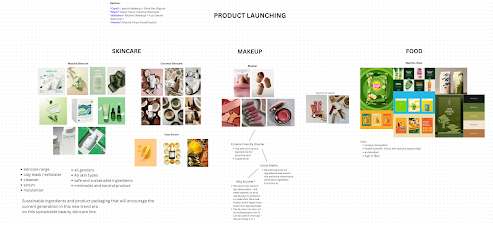20/01/2023 Week 1-2
AMELIA INTAN CAHYANI 0355211
Bachelor of Design in creative media

Instructions
WEEK 1
The introduction of the design of principles was taught to us in the first
week, and we were instructed to watch a video regarding each of them to
better understand how to prepare for upcoming exercises.
As learnt design focuses on communicating meaningful messages to a specific
audience, it is crucial to include components like point, line, shape, form,
texture, space and color. whereas principles of design contains Gestalt
theory, Contrast, Emphasis, Balance, Repetition, Movement, Harmony &
Unity, Symbol, Word and Image.
The principles concepts i’ll be focusing on are
Contrast and Balance.
CONTRAST
In my understanding, Contrast is the usage of elements that are visually
distinct. Contrast can draw the viewer's eye to a focal point and emphasise
certain things in a design in addition to drawing their attention, which is
quite similar to emphasis. The difference between the two is contrast deals
with the difference between two objects, and emphasis deals with the impact
of an object.
Here are some
examples of contrast
VISUAL REFERENCES
BALANCE
And for Balance refers to how objects, colors, textures, and space are
distributed visually. These components ought to be balanced to create a
design that feels stable, as if the design were a scale. There's various types of balance which contains; symmetrical balance,
asymmetrical balance, radial balance.
Symmetrical Balance -The elements used on one side of the design are the
same as those used on the other
Asymmetrical Balance - Although the sides differ, the balance appears to
be kept
Here are some
examples of balance
VISUAL REFERENCES
IDEA EXPLORATION & PROGRESS
I use a mountain theme for the contrast design similar to my visual
references above as mentioned. here is the sketch for
Contrast.
fig 10
This are some basic drafts i came up with. Procreate is what I'm using to finalized my artwork here and do some
paper sketches. And this is the sketch that i came up with for
Balance with asymmetrical approximate techniques. It indicates that although the subjects on both sides are dissimilar, there
remains a balance.
CONTRAST
I used the idea of a snowy mountains to complete my contrast design since
I like the colour blue and I've always been drawn to the vibe because I've
never seen or touched snow before.
fig 12
So I simply drew a mountain, and after experimenting with colours, I
chose blue since, as I already mentioned, light beige and orange. which
for me looks simple, clean and neat.
BALANCE
As for the concept of contrast between day and night, I used the
symbols of the star and sun. I got the idea for this because I enjoy
looking up at the sky so much, especially at night when you can see the
moon, stars, and other things. I chose a softer colour scheme for the
sun to mimic a sunset. Additionally, I chose a blue colour scheme for
the star. It turns out quite nicely for me and how I expected it to.
FEEDBACKS
Dr. Charles Sharma gave me feedback on my Contrast art work during the
first week, and I sent him a few sketches. I asked him to kindly give me
his thoughts on the sketches because they had a unity-like concept because
I thought contrast was just about playing with colours, but he corrected
me that it is a lot more significant and advised me to continue exploring.
I then improved the sketches with but kept the same snowy mountain
concept.
And for Balance, I also sent him the design I had already finalised, emphasising the
sun and the star, to get his feedback, he then asked me, to ponder the
divide between the star and the sun. altogether, my art work was
approved.
REFLECTION
I watched the majority of the lecture video on design principles during
the first week, and over the course of the next ten days, I actually
learned a lot about these concepts. I've done design before going to
college, so I think it will be very helpful working with pressure in the
future. I was sick all week, which made it quite challenging for me to do
the tasks at hand.
However, as I already indicated, once I start working and become a
designer, I'll have to cope with a lot of pressure. Moreover, I learned
how to create and maintain a blog through this exercise. Dr. Charles
Sharma also taught us that a design principle is what you think it is and
that it cannot be described. As a result, we engage in continuous
brainstorming to sharpen our creative thinking.
















Comments
Post a Comment